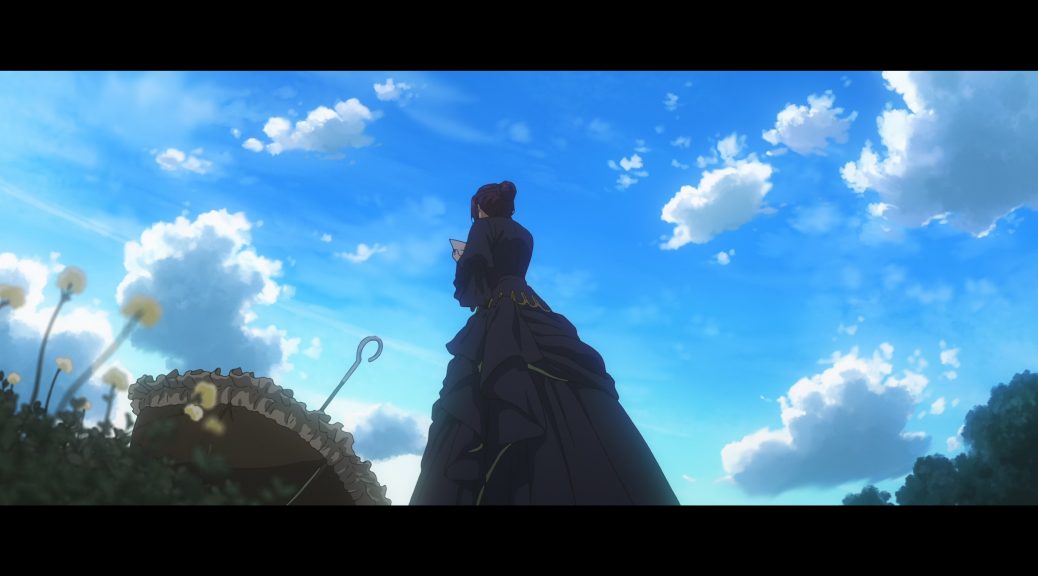
Violet Evergarden Side Story: Eternity and the Auto Memories Doll Interview – Director Haruka Fujita
Haruka Fujita, who was the sole project leader for the first time with Violet Evergarden Side Story, shared her experiences pre-production, the actual animation process, and the positive outlook she kept all the way through.
This interview, published in Violet Evergarden Side Story’s pamphlet, was recorded on July 16, 2019, two days prior to the arson attack at Kyoto Animation Studio 1. Translated by Megax.
Director Haruka Fujita
— Please tell us your actual feelings about leading a project for the first time with this film.
I feel relieved. I looked over the notebook I used during the script meetings and saw that I had been using it since September 2018. It feels as though the year that I’ve been working on this film has passed in the blink of an eye. However, it also feels like it’s taken that long to reach this point.
When I was drawing the storyboards, I was pondering how this work would come together. At times, it felt like I was walking barefoot on a pebble road. I kept feeling rocks on the bottom of my feet… but, as I finished the storyboarding process and completed various steps along the way, I was able to turn back my head and was amazed that something that began with a small step forward had led us so far. I’d have never been able to do everything by myself. I love this title – and that includes the process of creating it as well.
— What did you talk ain your meetings with supervisor Taichi Ishidate and series composer Reiko Yoshida?
At first, Violet Evergarden Side Story wasn’t supposed to be a movie, but rather an OVA featuring two 20-minute extra episodes in it. The plan was to take a story from the novels that hadn’t been adapted yet and add it as essentially two new episodes of the series – that’s what Yoshida pitched to us. From there, it gradually kept growing until it eventually became a film that placed Violet in more of a minor protagonist role, moving between the stories of Isabella and Taylor in each half. We attached the Side Story moniker to the title because personally, I feel like it doesn’t stray too far from the TV series, so it felt like an addition to it more than a standalone work.
The TV series was a compilation of tales about the growth of Violet herself. The viewers who saw the TV series would treasure those bittersweet memories when experiencing a new addition to the series, so keeping their feelings in mind, I chose to add an array of unshakable character emotions to this work. That’s why I created the film from the perspective of Isabella herself.
Also, Ishidate participated in the script meetings as well as checking over the storyboards. Basically, he’d look over the technical portions of the storyboards. I have a tendency to insert close-ups without changing angles/positions, so I asked him to check over those finer points so that there would be a necessary meaning behind that type of presentation.
— Speaking of which: there’s a recurring mid-way camera position for the characters that creates a feeling of closeness, and yet isn’t too overbearing – kind of a natural lens. It feels like you used that a lot in this film. You’re not snuggling to the characters nor feeling too distant from them. What caused you to choose that distance in this film?
I might be very picky about where the camera is located. Not to mention, since we changed the resolution to a wider size than when we worked on the TV series, we likely needed to make those portions larger in the first place. However, even though the width is larger, I had to remember not to over-do the length and distance when conceptualizing the work. To evoke a sense of reality from the visuals, I thought we should create the illusion that the characters are at a believable degree of closeness when looking at them. Also, I wasted to treasure the Western-inspired aesthetic in every single shot that featured it, showcasing its beauty as much as possible.
This time we were able to do location hunting in Germany, so we used the places we observed that time as references quite heavily. I was so grateful that we were able to have real-life locations to base our work on. Compared to Japan, especially the more modern parts, it’s simply a different world; the animals are different, the doors are larger than you could imagine, the ceilings are high, and the walls are thick… though I was surprised at how tight the inside of the castle we used as a reference for the girls’ school felt. It looked quite large from the outside! That was a discovery I wouldn’t have made if we hadn’t actually visited it. The doors were so large that you couldn’t use them normally as doors; the door itself had a smaller door in it for that reason. As I was scouting it, I thought things like “why would they make that kind of door?”
I wanted to express the atmosphere around the grounds as similar to real life as I could. The densely packed trees and colors from the forest, the beauty of the light peeking through the stained-glass windows, and even the dark portions were all important to me. Since the background staff also came along for referencing purposes, I feel like we were able to express the colors and atmospheric portions of that location as it is in real life.
If I had to point out something else regarding the background art for this film, it would be that the girls’ school in the first half of the film is situated in the Drossel Kingdom introduced in episode 5 of the TV series. To convey that, the flowers that bloom throughout the school are the royal flowers of the Drossel Kingdom, the White Camelia. And to emphasize the feeling of a girls’ school in the forest, we didn’t include anything too showy in its surroundings that’d distract the eye. Though Ishidate supervised various things like that, he always held my desires, what I wanted to show, and my vision in the highest regard, so this felt like I was fluttering along all carefree. (laughs)
— Though you say carefree, were there any points that troubled you?
I’m personally not the type to worry about that kind of thing, so not at all. (laughs) As we added unit directors and the key animationKey Animation (原画, genga): These artists draw the pivotal moments within the animation, basically defining the motion without actually completing the cut. The anime industry is known for allowing these individual artists lots of room to express their own style. staff was assembled, the depth of the title itself also gradually grew. I may have been the one in the director’s position, but perhaps due to my own lack of experience, I never actually worried too much with the staff by my side.
— Were there any points in the storyboards that took time?
The first half took a while. There was so much that I felt I had to depict that packing it all in the storyboards themselves took a lot of time. But, since I’d already figured out the direction I wanted to head towards with that first half, I was able to draw the latter half’s storyboards smoothly.
Before we started production on Violet Evergarden Side Story, there was a gathering of all the staff from Kyoto Animation and Animation Do, so at that time I gave a speech as director. Back then, I said I was going to draw storyboards that would make them all think they’d love to work on that title – that sure was a way to raise my own bar. After that, I couldn’t show my face to the staff when we had our meetings. (laughs) Even though I added that hurdle for myself, I was in such a relaxed state that I felt like I was able to easily handle this title. Since the key animationKey Animation (原画, genga): These artists draw the pivotal moments within the animation, basically defining the motion without actually completing the cut. The anime industry is known for allowing these individual artists lots of room to express their own style. staff instantly approached me with questions they were curious about, we had countless conversations about the work that needed to happen.
— What meetings did you have regarding the character designs?
The characters that appear in the first half were all done basically by myself and character designer (Akiko) Takase. During the second half, Ishidate also joined our meetings. I recall that Cattleya, Erica, and Alice were approved smoothly. However, we had lots of concerns over Violet herself. Since she’s a somewhat unchanging existence in a period of constant evolution, the depiction of Violet’s growth has never matched the ever-changing nature of the setting. She will adapt by matching other characters as they do things like changing their clothes and hairstyles, but determining how much Violet herself has evolved is challenging. If we changed too much it would feel weird, but we needed to root Violet’s growth in some concrete changes. Also, since her silhouette wasn’t meant to change all that much either, a certain designer by the name of Takase also worried that there might be too strong of a contrast with the TV series if we overdid it (laughs).
— What kind of directions did you have regarding the new characters like Isabella and Taylor?
I’m certain I gave various directions, but all I can remember now is telling them to have fun in the process. Pondering about the designs and colors was so enjoyable! Truth to be told, Takase and I would get stuck in situations where all we could say to each other is how cute it was turning out. We had conversations where we’d use countless variations of “so cute!” (laughs)
— This time, you changed the screen resolution to match the theatrical size of 2.31:1 compared to the TV series’s 16:9 resolution. What was the intention behind that change?
The idea to give it a spin had been always been floating around the staff. However, we didn’t want to just change the aspect ratio for no good reason, so there had to be an appropriate title and the timing had to be right among other things, which is why it took time to find the right opportunity. It felt like this was that chance, as Violet Evergarden was moving forward with a project like this changing directors, and thus we pitched the idea. I feel that this work’s world is suited for that resolution… though the truth is that I couldn’t put the why in words to explain it to the staff. At first, I proposed it with just by going “This is great! We can do this!” and all the staff around me were confused. (laughs) Once I spoke with each section with various ideas and proposals, we were able to work on it like this.
— What changed in the workflow when you changed the screen size?
For me, drawing wider storyboards was an easy thing. When we tackled the animation process, we all did so with full awareness that extending the horizontal length also meant decreasing the vertical side. Although we tried using the layout sheets from the TV series as-is for this film, we weren’t able to make them work well. When you pull the camera back, you have to make the characters appear smaller, hence why we drafted many layout designs with that mind. But that presents another problem: the designs for this work contain a lot of information and lines, so a seemingly simple concept like drawing them smaller is actually very challenging work. From the technical side, we moved forward by struggling with those issues and finding tricks to circumvent them.
— This was your first time participating in the voice recordings as a director too. What did you talk with sound director (Yota) Tsuruoka-san and the cast about?
Before the recordings started, I stood in front of everyone as the director and addressed them… but I’m not good at speaking while standing in front of people, so I ended up reading through the notes I’d written beforehand with everything I wanted to convey to them. And then Tsuruoka teased me by saying “do we need the sketchbook today?” (laughs)
At the time I addressed them, I actually wrote down lots of things I wanted to convey to the cast, but I was so nervous and anxious that I could only talk about the direction of the title. I forgot to talk about the characters… At such an important moment, I ended my speech without saying anything at all about them and nor giving the cast proper guidance. (laughs) And yet, Isabella’s (Minako) Kotobuki and Taylor’s (Aoi) Yuuki gave such wonderful performances without me explaining anything at all to them.
I’m not great at choosing my words when I want to convey something to people, so whenever we needed to discuss something, Tsuruoka would wait for me to find the right terms. The pressure to get it right the first time was so strong that I also got caught up in the mood. It was such a valuable experience for me.
— What do you think about the finished visuals?
I’m feeling a mix of gratefulness and restlessness. I gave it all I had! I’ve no regrets! I feel confident that the staff filled these wonderful visuals with a lot of love!
— Were there any heartwarming stories during production?
I was overjoyed when I received a letter from the original author Kana Akatsuki. She sent a letter to the address I’d given everyone as the director regarding the storyboards for this work, so it was a delightful surprise to get an unexpected reply from the author herself. I was very grateful to receive it.
— The bonus items for attendees this time are short stories written by Kana Akatsuki herself.
They are truly lovely stories. Though I love both works, I read Isabella’s story “Isabella York and the Rainy Flower” and wondered if perhaps the way I had visualized her was different than hers. In each story, everyone is connected to Violet by love. She wrote a ton of new material to be distributed alongside this film so I’m overflowing with grateful feelings towards her!
— To wrap this up, do you have a message to everyone who came to view this film?
Much like Violet Evergarden‘s TV series, this side story Eternity and the Auto Memories Doll is a tale about people so wrapped up in their own emotions that they can’t progress in their everyday life. Violet treats them kindly and they are able to move forward once again. In this film, there are people who resent change in an evolving world, those who cling to unwavering feelings even as their environment changes, and even individuals who stand as still as their surroundings, wishing others happiness instead. I wanted to depict those people, each living with different thoughts and feelings in their hearts, all with perspectives of their own. This work features people coming to the realization that they kept warm emotions towards others in their past, and that they still hold those moments dear even as their hearts may change over time. Since I’ve also planned some links between this film and the upcoming Violet Evergarden sequel movie, it’d make me happy if you watched this and carried those feelings over to the next film.
Support us on Patreon to help us reach our new goal to sustain the animation archive at Sakugabooru, SakugaSakuga (作画): Technically drawing pictures but more specifically animation. Western fans have long since appropriated the word to refer to instances of particularly good animation, in the same way that a subset of Japanese fans do. Pretty integral to our sites' brand. Video on Youtube, as well as this SakugaSakuga (作画): Technically drawing pictures but more specifically animation. Western fans have long since appropriated the word to refer to instances of particularly good animation, in the same way that a subset of Japanese fans do. Pretty integral to our sites' brand. Blog. Thanks to everyone who’s helped out so far!
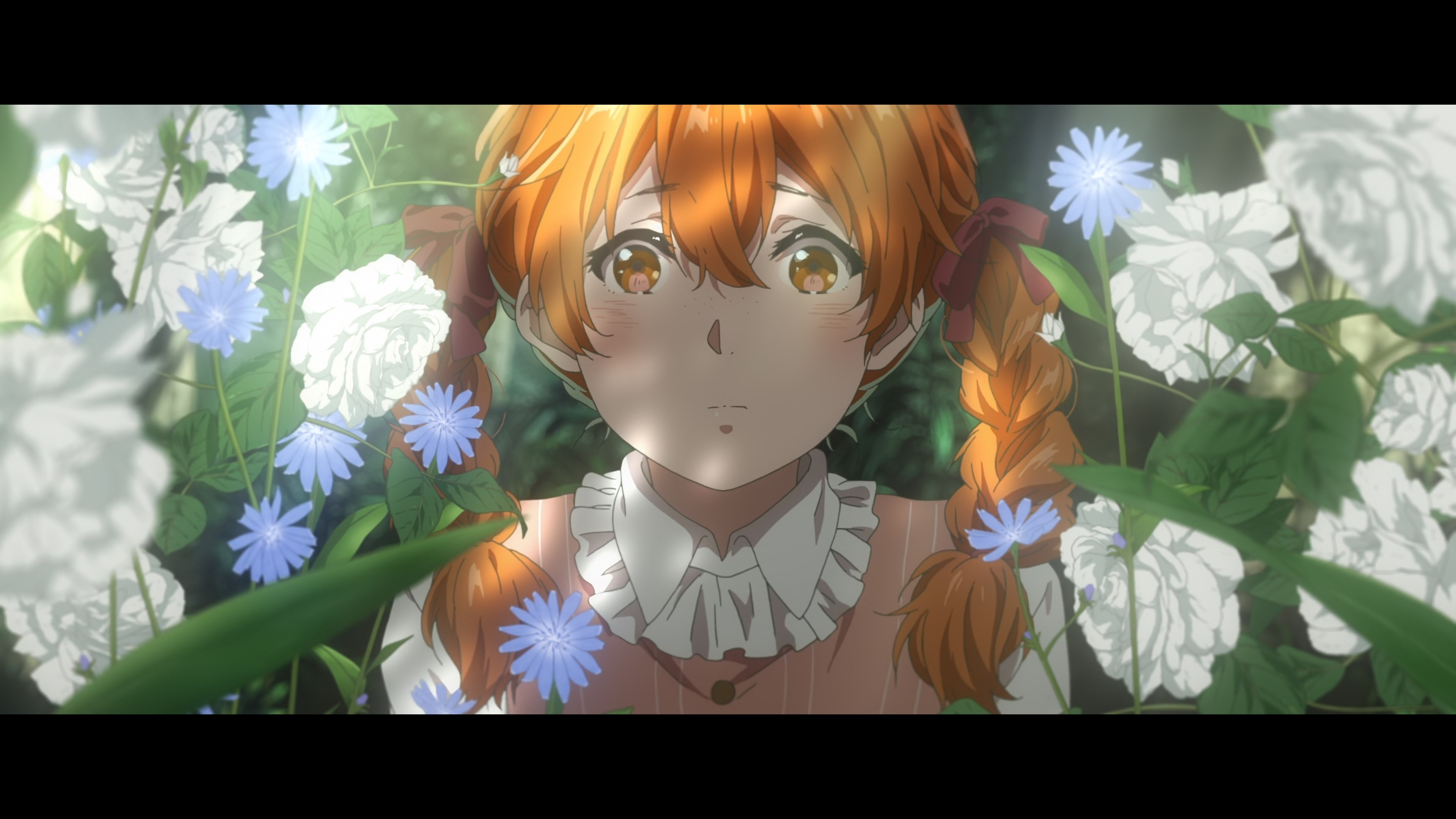
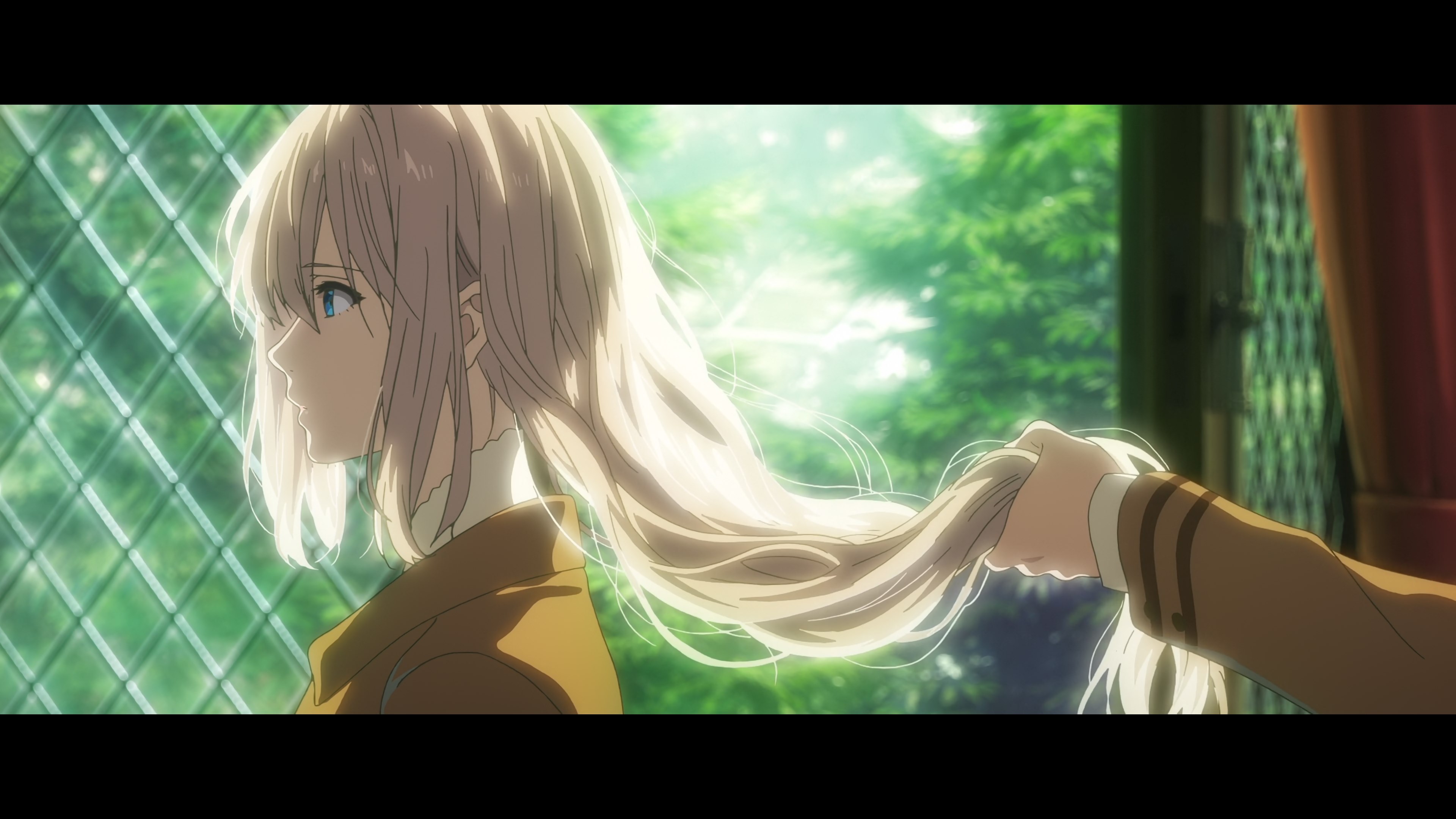
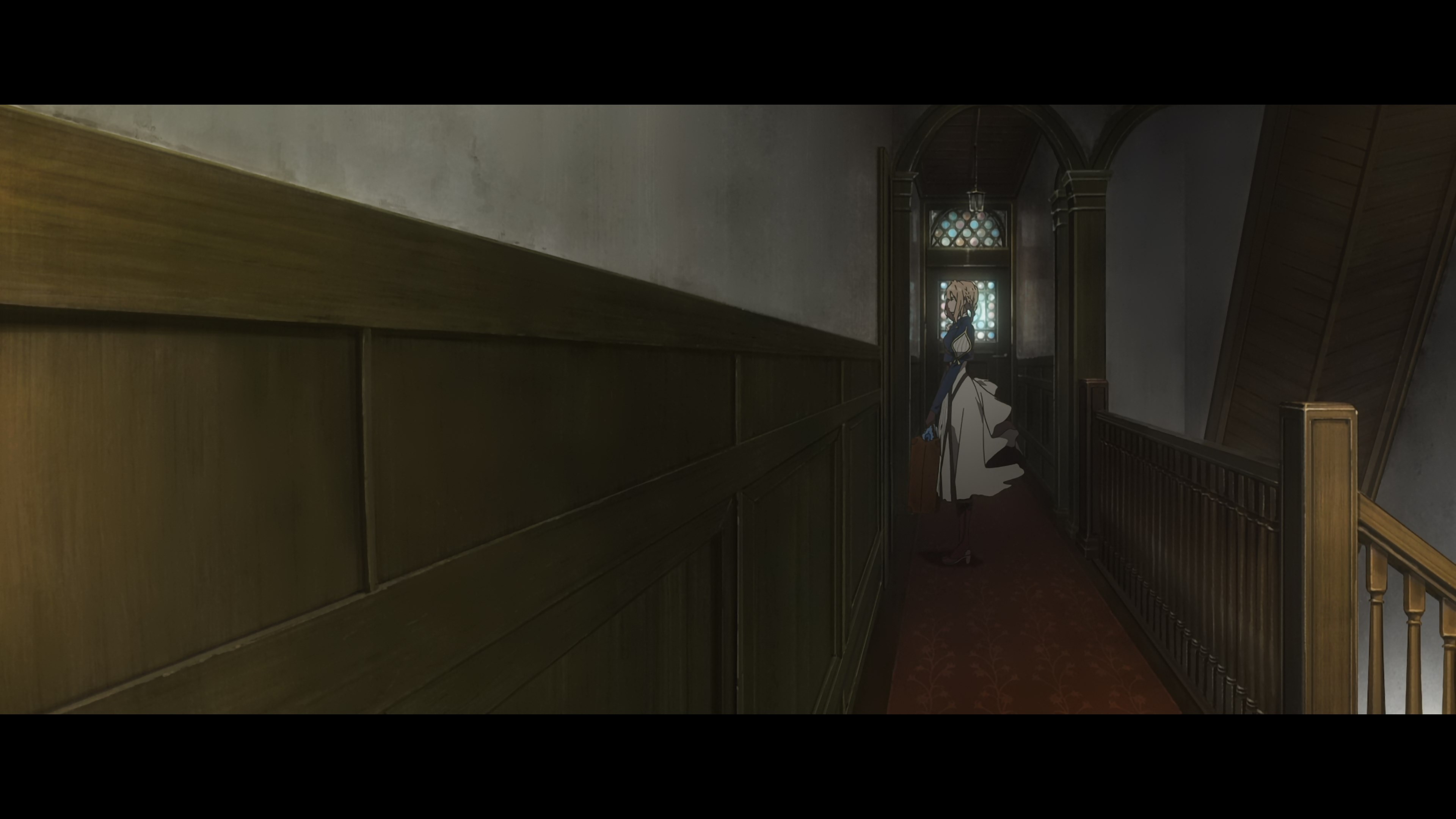
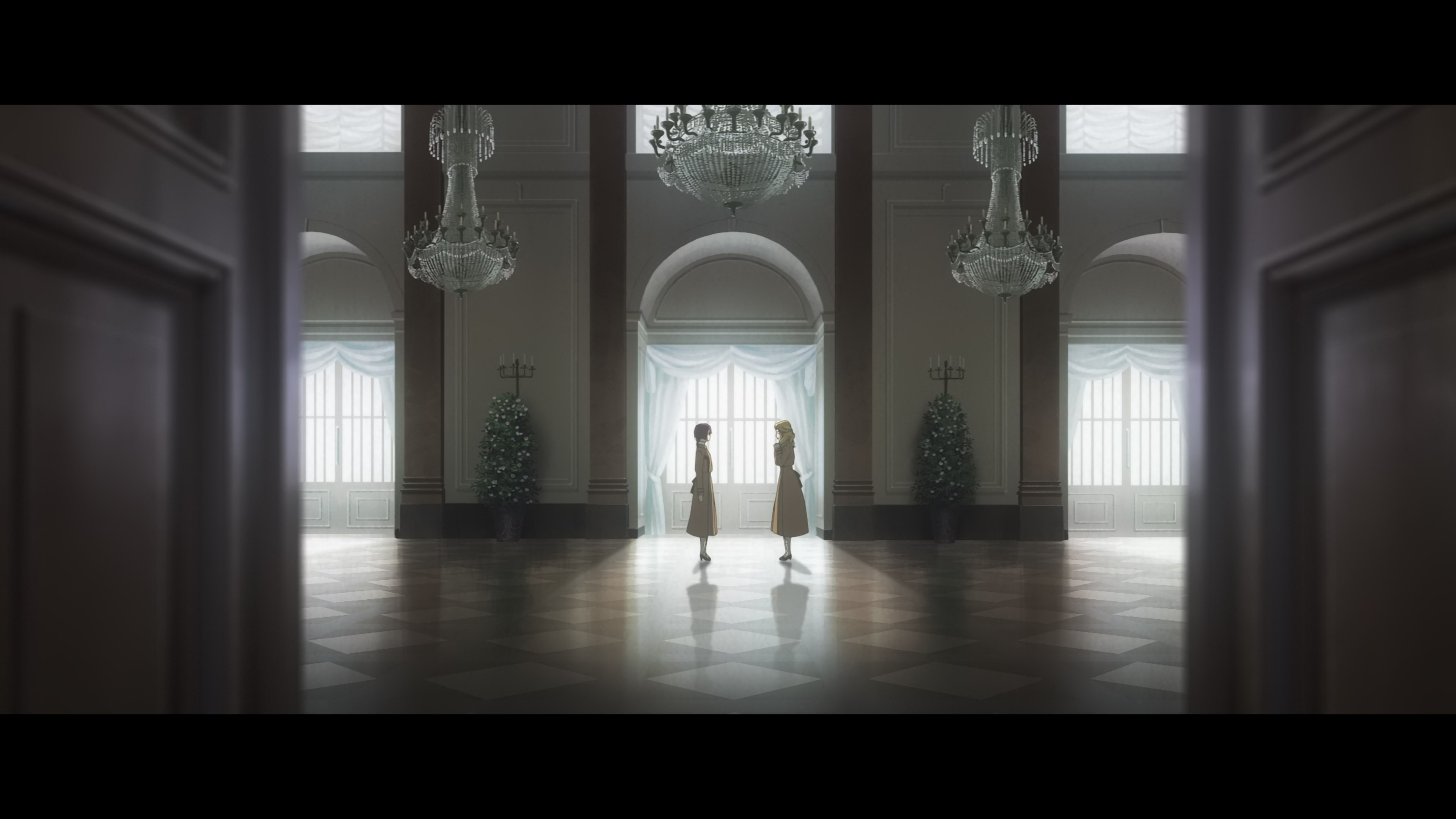
Very interesting. Also, how common is storyboarding a movie by yourself? And how common is that wide resolution in anime movies?
KyoAni does this more often lately. Ishihara storyboarded Our Promise by himself, Yamada storyboarded Liz and Blue Bird by herself. I don’t know about other studios tho.
Overall it’s becoming less common, mostly because the majority of anime movies nowadays aren’t made as such – regardless of their quality, they’re TV shows that happen to be screened on theaters. Among more traditionally theatrical projects it’s still relatively unusual, often reserved to directors with a very specific vision when it comes to composition. Fujita had no business boarding 90 minutes like this all on her own, but she’s always been precocious and it worked out wonderfully, so no complaints.
I believe her name’s Iris not Alice. I thought some time about who’s Alice)
Ooops, fixed that.